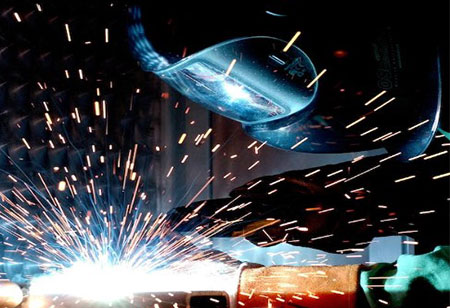
Aluminium requires specialist skill and knowledge to weld. When welding aluminium, it’s about chemistry and knowing how to weld it. Read on for reasons why aluminium is difficult to weld and what you can do about it.
Reasons Why Aluminium Is Difficult To Weld
If you’re not an expert in MIG weld aluminum then it can be tricky (and even dangerous) to try as an amateur - here’s why.
1. Oxidation
This special type of metal has properties that ensure it doesn’t corrode. This is actually aluminium oxide, which is a stable material that prevents corrosion or damage to the metal. This layer serves as an insulator to the material underneath (the aluminium itself).
This means that heat can’t be applied easily. While a high level of heat is required to melt through the oxidised layer, this can easily burn holes underneath it. This means there is a small window of workability in which the material won’t melt but becomes malleable.
2. Hot Cracking
Hot cracking is not cracking per se, which you would find in steel. This happens when the metal is heated to liquid form and then solidifies.
While welding, it’s easy for hot cracking to occur. To avoid this, joint design or changing the base material away from pure aluminium can help. When changing the filler material, you should consider the project as a whole. This means that you should think about the corrosive possibility as well as the end look you have in mind.
If in doubt, you can consult an aluminium filler metal chart to make sure that you make the right choices for you and your project.
3. Sensitive Material
It may not seem obvious, but aluminium is a sensitive material. It can be easily compromised and can easily become tainted.
To avoid these types of issues, you have to clean the metal before you start any work. This will remove all the impurities from the metal itself.
In the event that you don’t use the metal straight away, it has to be cared for correctly. This means that it has to be stored in a way that prevents dirt, air and even water from damaging the metal.
A top tip is to store the metal at room temperature, as this will help fight the oxidisation process. It’s worth remembering that this type of metal doesn’t keep for long and should be welded within a few days of cleaning it. There is a risk of weakening the aluminium if you haven’t cleaned or stored it properly prior to welding.
4. Appearances Are Deceiving
Aluminium can be tricky to assess how thick the material is when you start to weld, this is in part due to its low melting temperature. This can be difficult since it will feel as though it is taking a long time, but rushing the task can be detrimental and ruin the metal in a matter of seconds.
Using The Correct Process
While aluminium is difficult to weld, welders who use the correct machine find that it’s much easier. There are two machines: TIG and MIG welders.
The former alternates between cleaning the oxidised layer as it melts while MIG combats the porousness of the metal. This minimises the risk of damaging the metal.
Final Thoughts
While welding aluminium is challenging, your priority should always be to avoid damaging the metal and familiarising yourself with the equipment you’ll be using.
With the right tools, techniques, knowledge and a lot of practice, aluminium welding becomes a carefully controlled matter of routine and best practices. If you’re interested in amateur or professional aluminium welding, it all begins with having the right equipment – and knowing how to use it!
We use cookies to ensure you get the best experience on our website. Read more...